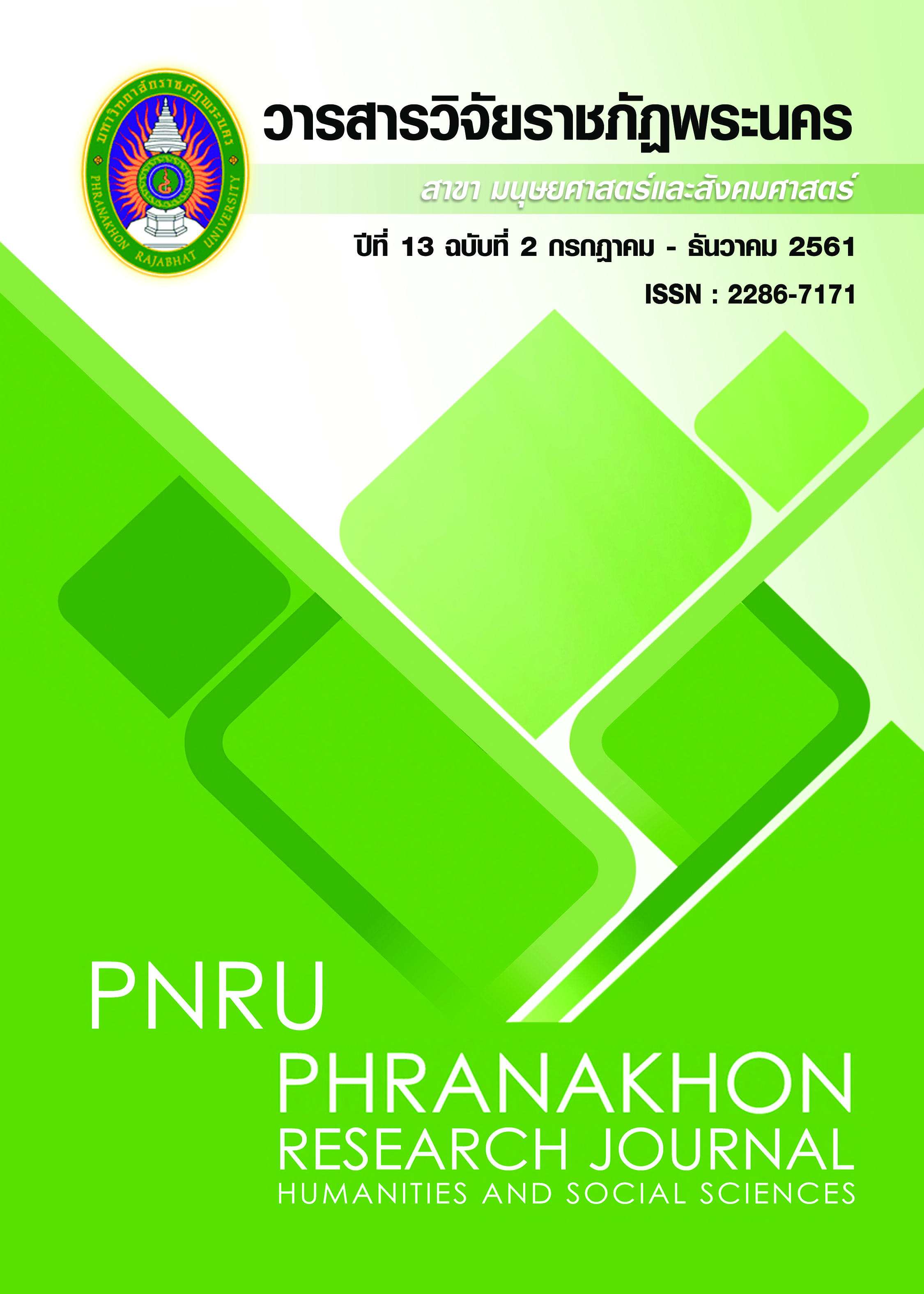COMPARING PHU TAI LANGUAGE IN RENU, RENU NAKHON DISTRICT, NAKHON PHANOM PROVINCE WITH SONG MEUNG TAI VILLAGES, KHAMMOUANE DISTRICT, LAOS
Main Article Content
Abstract
This article is intended to compare the tonal tones of Phu Tai in area 2, Renu, Renu Nakhon District, Nakhon Phanom, and Tai language in Song Meung Tai villages, Khammouane District, Laos. Collected data from sixty speakers aged 50 and over using Gedney's tonal tones (1972) and using the phonetic method, the PRAAT analysis program sounds.The study indicated that Tai language in Nakhon Phanom has 5 tone units combining the tone of the tonal form AB123, A4 = B123 = DL1234, B4=C12=DS4 tone split B4 and C4 and B=DL tone 1 A123 has a mid falling rising level tone 2 A4 B123 DL1234 has a rising falling level tone 3 B4 C12 DS4 has a rising level tone4 C3 with mid-level tones and the tone at 5 C4 DS123 has a lower-mid rising but Phu Tai language in Song Meung Tai villages, Khammouane District, Laos has 4 tone units combining the tone of the tonal form A123=DS123, A4=B12=C1=DL1234 tone split B4 and C4 and BDL tone 1 A123 DS123 has a mid rising-high level tone 2 A4 B12 C1 DL1234 has a rising falling tone 3 B3 C234 has a lower-mid high falling level and the tone at 4 B4 DS4 has rising level both Phu Tai language have the same tonal combination of A123 and DL1234. There is a tonal similarity to the rising falling level in the A4 B12 DL1234 and rising level in the B4 DS4. The mid tone is shown in Renu, Renu Nakhon District, Nakhon Phanom Province but in Song Meung Tai villages, Khammouane District, Laos do not appear, so the number of units of the two different places.
Article Details
Each publish articles were copyright by Phranakorn Rajabhat University
Any contents which appeared in each articles in the journal were authors personal opinion. It did not relate to Phranakorn Rajabhat University and other instructors in the university. Each authors would take responsibility on their articles. If there are any mistake, the authors will take responsibility themselves
References
Akharawatthanakun, P. (2003). Tone change: A case study of the Lao language. The thesis for the Degree of Doctor of Philosophy in Linguistics Department of Linguistics Faculty of Arts Chulalongkorn University. (in Thai)
________________. (1998). Comparative study of the tonal system in the speech of the "Lao", the "Nyo" and the "Phutai" in that phanom district, Nakhon Phanom province. The thesis for the Degree of Master in Linguistics Department of Linguistics Faculty of Arts Chulalongkorn University. (in Thai)
Burusphat, S. (2013, July-December). “Tonal variation and change of Tai Dam”. Language and Culture Journal. 32 (2): 19-41. (in Thai)
__________. (2000). Dialect geography. Nakhon Patom: Research Institute for Languages and Cultures of Asia, Mahidol University. (in Thai)
Chaiyasuk, t. & Mollerup A. (2014). Phu-Tai: Ethnic Tai or Tai people? (Online). Retrieved May,12, 2017 from http://www.phutai.thai-isan-lao.com/Chaiyasuk-Mollerup-2014-Phutai _ethnonym_THAI.
Gedney, W. J. (1972). A checklist for determining tones in Tai dialects. In M. E. Smith (Eds.), Studies in Linguistics in Honor of George L. Trager (pp. 423-437). The Hague: Mouton.
Khanittanan, W. (1977). Phutai Language. Bangkok: Thammasat University Press. (in Thai)
Liamprawat, S. (2008). Study of dialects: Tai language. Nakhon Patom: Silpakorn University Printing house.


